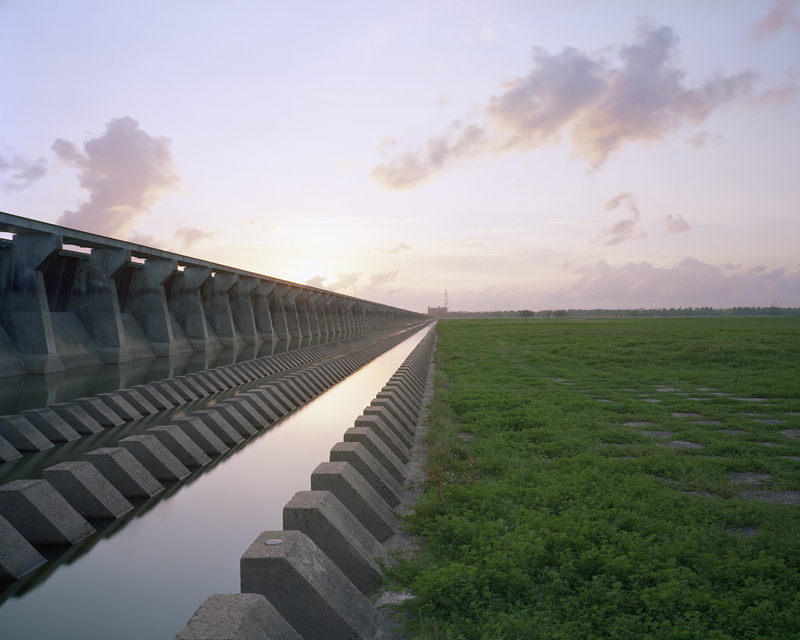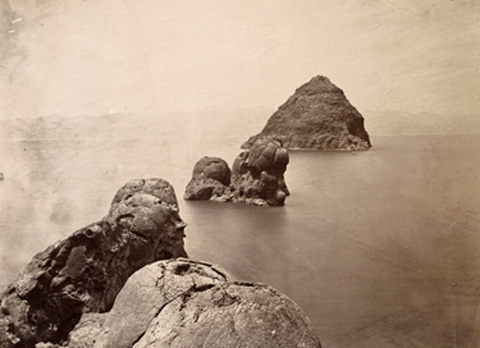Ryan Parker's Hinterland series explores the intermediate zones between the altered and natural landscape: distribution centers, storage complexes, real estate developments, gravel pits. These images bring to our attention and elevate those scenes we see so often yet disregard as unimportant, and by so doing makes us confront our role in the disappearances of so much of the natural landscape in order to satiate society's hunger for "bigger" and "better" and our need to have more and have it now.
Alexander Davis
I've been following Alexander Davis on Instagram for a while now, and I've really loved his work.
I asked him a few questions about himself and his photography. You can read about him below:
Would you mind telling me a bit about your background as a photographer? How long have you been making photographs?
“My history as a photographer is rather limited, I’m really no expert. Professionally, my background is in advertising and film post-production, commercial music mainly, and my education is in Philosophy and Audio Engineering. I picked up a Fujifilm X100-T in 2015, looking for a new personal creative outlet as music had really become “work” and I needed something else just for me. I was living in New York at the time and would go on long walks around the city, taking photos, experimenting with editing them. I didn’t realize how meditative this practice can be, but it quickly become an important part of my life. Later in 2015 I moved to Los Angeles and had a brief stint working at an editorial/post shop in Santa Monica. Ultimately I had to get out of “the industry” for the sake of my mental health and a desire, at the age of 30, to focus on my own creative work instead of producing other people’s. I spent the next year driving all over California and taking loads of photos, then last summer I felt it was time to get out of the city altogether and moved back home to Colorado. My long-term goal is to have a physical gallery space at some point, transition to medium-format to start producing much larger prints and hand-build the frames. I want to create real things of value for people to put in their homes, keep it local and off the internet as much as possible. ”
Who are your influences? Who is your favorite photographer?
“Oh man, pedestrian opinion maybe but I love Slim Aarons. It’s not what I do at all but I’m a sucker for that 60s jet-set joie de vivre stuff. In terms of inspiration, I’ve always admired the work of cinematographers and colorists since working in post and try to apply those types of grading techniques to my stills. I love everything Roger Deakins ever did, particularly Sicario. The look of that film and the setting are amazing. It’s similar but much more vivid than No Country for Old Men, which is pretty universally loved by photographers. I like to look at a lot of Americana, being a Colorado native, have got some Joel Sternfeld and Bill Owens books around the house. I saw Christopher Williams’ The Production Line of Happiness retrospective in NYC around the time I first started shooting. I think I was really consciously turned on by the look of film for the first time then. Lately I’ve been spending less time browsing Instagram than I used to. There’s so much great work out there, but I feel like I’ve just been looking at too much photography, perhaps feeling overwhelmed with influence and finding it difficult to really connect with people’s work due to the cursed algorithm and the nature of the platform itself. On top of that I’ve now lost any desire to go to Iceland. Ever. Truly, though, I have met some absolutely wonderful, immensely talented people through Instagram and I am endlessly appreciative for all the kind words. It’s been amazing to find a place in the community and I do love how enthusiastic many of us are about each other’s work, discussing techniques and locations and just messaging to say hello. That’s been a real joy.”
Against The Modern World No. 3
About Against The Modern World, he says:
“This series was taken at the end of April in Eldorado Canyon, a small town and state park just south of Boulder, Colorado. It was snowing with dense clouds moving between and around the jagged rocky features of the canyon, subtle spots of light coming through every so often which made for very dramatic atmosphere.”
Against The Modern World No. 6
“The Organ” from The Great American West
My morning in Arches National Park last July was flat grey overcast, which was actually a nice change from all the other days I’ve had there when the light was typically very harsh. The Organ is an impressive edifice, roughly 500ft tall, and I really like how its stature came through in the image. I did a vertical composition as well, which can be seen in my 4x5 editions.
“Mt. Lincoln” from The Great American West
This was taken last November above Hoosier Pass, south of Breckenridge in the Mosquito Range. It’s a fairly low-key 4x4 trail up above timberline. Mt Lincoln is 14,295ft at its peak, which is seen here scraping moisture out of the atmosphere.
“Morning Light” from The Great American West
I take my morning coffee in the car and just drive around nearby rural areas a few days a week. The early light against the foothills makes for beautiful views and subtle contrasts, just nice quiet moments.
Subtlety No. 4
A morning drive through a particularly dense fog in Niwot, Colorado. Left Hand Creek is seen winding through layers of trees.
Subtlety No. 5
A panorama looking south toward Boulder over Left Hand Reservoir, taken from Neva Road.
Subtlety No. 10
A foggy morning somewhere along Buckhorn Road, west of Masonville, Colorado.
Jeff Rich
Jeff Rich has been photographing the Mississippi River Watershed for several years now.
Rail Bridge, Smith Mill Creek, Asheville, North Carolina, 2006
Watermain for the City of Asheville, The Swannanoa River, Black Mountain, North Carolina, 2007
So many of his photographs give me a guilty pleasure: they're beautiful photographs, but what's depicted in the photographs of what has happened and/or is happening to the landscape is frustrating, infuriating or even horrifying.
The sorts of scenes like the one below are a great example of what I mean.
Campground, The French Broad River, Asheville, North Carolina, 2006
Brown family farm, North Fork of the Swannanoa River, Black Mountain, North Carolina, 2007
Hominy Creek, Asheville, North Carolina, 2006
Coal Fly Ash Spill, Harriman, Tennessee, 2009
Raccoon Mountain Pumped Storage Plant Outflow, Tennessee River, Chattanooga, Tennessee, 2010
Bonnet Carré Spillway, Mississippi River, St Charles Parish, Louisiana, 2012
Check more of Jeff's work on his website.
Timothy O'Sullivan
This week, I thought I'd dig back into photography's past and look at one of my all time favorite photographers. Ansel Adams was my first influence as a photographer, but he was soon supplanted by Timothy O'Sullivan, Matthew Brady, Edward Muybridge, Carleton Watkins, and others (now that I've chosen to do a post on O'Sullivan, I'll likely do posts on the other afore mentioned photographers). I still remember thumbing through my History of Photography text book back in college at the beginning of the semester, and seeing the photograph below and thinking something along the lines of “Ah, an Ansel Adams photograph” and then looking at the caption and learning that it was actually made by O’Sullivan.
After that, I dug a little deeper into O’Sullivan’s work. I don’t really remember my initial impressions, or how soon afterwards he became one of my favorite photographers. And I’m not really sure there is a photograph of his that I would call my favorite. I think what impressed me first about O’Sullivan, and the other 19th Century landscape photographers was the incredible effort that was put into making their photographs. I loved imagining myself alongside them, a portable darkroom pulled behind a horse with hundreds of pounds of glass plates, hoping they don’t break along the journey, rushing to make an exposure before the collodion dried.
O'Sullivan started his photographic career as a Civil War photographer, apprenticed under Matthew Brady, then after the war worked as the photographer for several Survey Expeditions in the West.
I’ve always found the choices O’Sullivan made to be intriguing. He never made the obvious choice when making his compositions, even when working during the Civil War. He had a sensitivity to the landscape that I still envy.
You can read more about O'Sullivan and view more of his work at the Smithsonian American Art Museum's website.






















